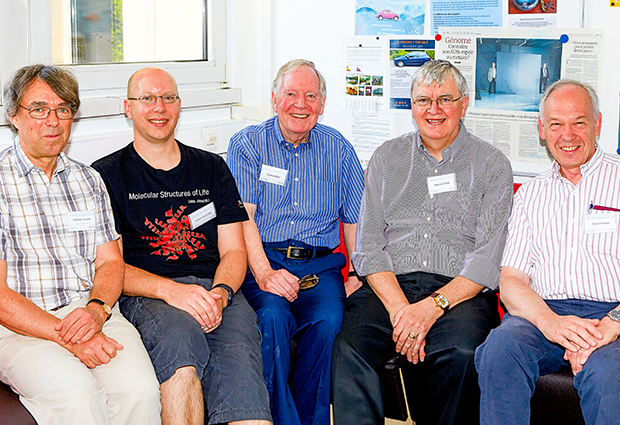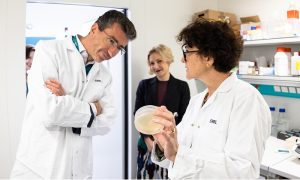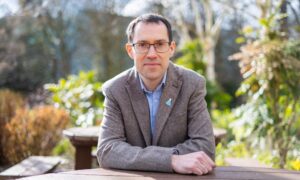
Molecular momentum
Speaking to staff past and present, Andrew Miller, the first head of EMBL Grenoble (1975–80) reflects on four decades of science, structures and spirit at the Outstation.

How did you end up at EMBL?
Two years before moving to Grenoble, I was talking science over coffee with neutron scattering pioneer John White who suggested my group use the technique to complement our X-ray studies on collagen – and we were delighted that it worked. John Kendrew, EMBL’s newly appointed Director General, became aware of our work and wrote to me to ask if I would be interested in coming to lead an EMBL Outstation situated next to the Institut Laue-Langevin (ILL). There were not many biophysicists using neutrons at the time and I was very excited by the prospect of working within a few steps of a cutting-edge source of high-energy neutron beams.
Has the vision of the early days been fulfilled?
For EMBL Grenoble’s pioneers there were major challenges, not least convincing the community of the potential of using neutrons to study biology. But the Outstation was productive from the outset and over the years has delivered astonishing technological advancements hand-in-hand with outstanding science. The opening of the new ESRF in the 1990s added to this momentum, bringing together highly complementary X-ray and neutron facilities in one place – and we are still reaping the benefits today. Close links between several institutes in Grenoble creates a model for other centres around the world and I think it is clear the early vision has been realised.
For EMBL Grenoble’s pioneers there were major challenges, not least convincing the community of the potential of using neutrons to study biology
What are your most striking memories?
I remember our first visit to the building in which we were renting space for the Outstation. Our footsteps echoed as we entered the yawning, silent, empty laboratories in the Batiment Laboratoire de Moyen Activitie (LMA) and I thought to myself ‘medium activity’ must be an exaggeration. But it quickly became a hive of activity and the staff in LMA and ILL were very helpful getting the Outstation moving. On another occasion, when travelling from Oxford to Grenoble, I was carrying specimens for the neutron work in the form of frozen rat tails in a thermos flask. The security guard at the French border inspected the contents of the flask then turned to me and asked what sauce I served them with – at that moment I knew I was really in gastronomic France!
What does the future hold?
Four decades ago, who could have predicted the impact that using neutrons and X-rays would have on our understanding of biology? Today, the growth of fields such as genomics and pharmacology present a limitless supply of molecular structures that need to be resolved in 3D. This is something that the next generation of synchrotrons is well equipped to tackle. Advancements in instrumentation, investigation and imaging at EMBL Grenoble will continue to be a major driving force for zooming in further on the molecular structures of life. While it’s impossible to predict what’s to come, it’s very exciting to imagine what might lie in store.
Convening in the Carmen Cafe
The group – including Stephen Cusack (Head of Outstation), Andrew McCarthy (group leader), Andrew Miller, Stephen White (PhD Student 1976–78), and David Hulmes (postdoc, 1976–78) – reunited at EMBL Grenoble’s 40th Anniversary celebrations, and is pictured in the Outstation’s Carmen Cafe, named after former staff scientist Carmen Berthet. “Carmen made a crucial contribution to the establishment of the Outstation and was a lively, happy and unforgettable personality,” said Andrew Miller during a dialogue captured at EMBL Grenoble’s 40th Anniversary celebrations. More excerpts from this interview will be made available on the EMBL Alumni Relations webpages.
Catch up with other important players from EMBL Grenoble’s past – four alumni share their stories >


